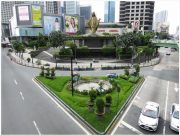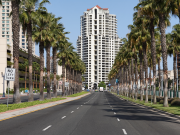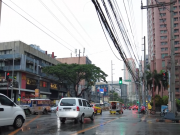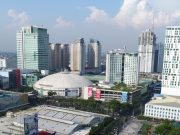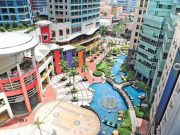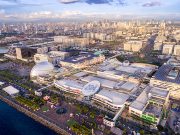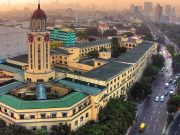The Philippines, a tropical archipelago with over 7,000 islands, offers an enchanting mix of vibrant cities, tranquil beaches, and lush countryside. Its rich cultural heritage, warm hospitality, and affordable living have made it a sought-after destination for homebuyers worldwide.
The Philippines presents diverse lifestyle options, from the bustling metropolis of Metro Manila to the pristine shores of Palawan or the cool highlands of Baguio. However, when choosing your dream home in the Philippines, home orientation is another crucial factor.
The orientation of your home, whether it faces north or south, plays a significant role in determining the amount of natural light, the temperature control, and even the energy efficiency of your home. It might seem trivial, but the direction of your home faces can significantly impact your comfort and quality of life.
This comprehensive guide explores the importance of home orientation in the Philippine setting. The interaction between the country’s tropical climate and different home orientations is examined, highlighting how an informed choice can enhance the living experience in the Philippines. Whether a local or an expatriate, the provided insights will assist in navigating the property market and making a decision that suits one’s lifestyle and preferences perfectly.
I. Understanding Home Choices in the Philippines
In the Philippines, homebuyers have a multitude of options to choose from. The diverse housing market offers everything from condos and houses to townhouses and vacant lots. Each type of property comes with its own set of advantages and disadvantages.
Condos
Condominiums are popular among city dwellers and foreigners due to their strategic locations, often near business districts and commercial hubs. They come with shared amenities like swimming pools, gyms, and 24/7 security. However, they offer less privacy and space than standalone houses, and condo fees can add to your expenses.
Houses
Houses provide more space, privacy, and freedom to customize. They are ideal for families or those planning to settle down long-term. However, they usually require more maintenance and are often located further from city centers.
Townhouses
Townhouses strike a balance between condos and houses. They offer more space and privacy than condos but are generally closer to city centers than most houses. On the downside, they can be pricier and may still come with association dues.
Vacant Lots
Vacant lots offer the most flexibility, allowing you to build your dream home from scratch. However, they require significant time and resources to develop and may not have immediate access to utilities and amenities.
Regarding foreign ownership, Philippine law generally restricts foreigners from owning land. However, they can legally own units in condominium projects, provided foreign ownership in a single project does not exceed 40%. It is essential to consult with a real estate lawyer or property expert to fully understand the legalities involved in buying property in the Philippines as a foreigner.”
II. The Importance of House Orientation
House orientation is a crucial factor that can significantly affect your home’s comfort and energy efficiency. In the tropical climate of the Philippines, where the sun is intense and the air can get humid, the direction your house faces can impact natural lighting, ventilation, and temperature.
Impact on Natural Lighting and Ventilation
A well-oriented house can maximize natural light and promote better air circulation. This reduces the need for artificial lighting and air conditioning, leading to significant energy savings. Moreover, ample sunlight can enhance your home’s mood and aesthetic appeal, while good ventilation can keep the indoor air fresh and healthy.
Benefits of a South-Facing Property
In the Philippines, a south-facing property receives more sunlight throughout the day. This results in a warmer and brighter home, which can be beneficial during the rainy season when days are typically gloomy. However, it may require more cooling during the hot summer months.
Considerations for a North-Facing Property
On the other hand, a North-Facing property in the Philippines receives less direct sunlight, resulting in a cooler indoor temperature. This can be a significant advantage during the hot summer months. However, it may feel colder and darker during the rainy season.
Remember, finding the right house orientation is not just about following general guidelines. It is about understanding your needs and preferences and how they align with the local climate and sun patterns. Considering these factors, you can find a home that provides optimal comfort and energy efficiency all year round.
III. Practical Aspects of Moving to the Philippines
Relocating to a new country is a significant life change, and moving to the Philippines comes with unique considerations. From understanding local customs and norms to arranging pet logistics and familiarizing yourself with local amenities, there is much to consider.
Things to Know Before Moving to the Philippines
Before moving, you must acquaint yourself with living in the Philippines. The job market can be competitive, so having a solid employment plan or starting your own business might be advantageous.
Understanding the health care system and tax regulations for expats is also crucial. Additionally, remember that while the culture and people are unique and often welcoming, you may encounter a “foreigner price” for goods and services.
Guide to Moving Pets to the Philippines
If you plan to bring your pets, understand the country’s pet importation rules. It is advisable to consult with a professional pet relocation service to ensure all requirements are met, and the move is as stress-free as possible for your furry friends.
Exploring Local Amenities
The Philippines offers many local amenities, from world-class museums and parks to vibrant shopping malls and diverse restaurants. Whether in bustling Manila or the beach town of Boracay, there is always something to explore. Familiarize yourself with the local scene to ensure a smooth transition and enjoy all your new home offers.
IV. First-Time House Buyer/Builder Guide in the Philippines
Venturing into home ownership or building your own house in the Philippines is a significant milestone. With careful planning and informed decision-making, first-time buyers and builders can navigate this process successfully.
Steps to Owning a Home in the Philippines
- Determine your budget
This involves assessing your financial situation and deciding how much you can afford a house. Your budget should factor in all expenses, savings, income, and future home ownership costs.
- Consider getting a loan
You may need a loan to finance your home purchase depending on your financial status.
Explore different neighborhoods and decide what best fits your lifestyle and needs.
A reputable real estate agent can provide valuable assistance in finding the right property and navigating the buying process.
If you are building a house or buying a new one, investigate the developers’ or builders’ reputation and track record.
- Schedule a site tour
Evaluate the construction quality, the property’s size, and the neighborhood.
Tips for First-Time Buyers/Builders
- Have a list of questions ready
Inquire about the history of the property, its building materials, and the amenities offered.
- Clearly define your preferences and priorities
Consider factors such as location, size, layout, and number of bedrooms and bathrooms.
If you are a foreigner wanting to buy a house, consider a long-term lease agreement with a Filipino landowner or purchase a property through a corporation.
- Plan for the long-term
Remember that home ownership is a long-term commitment. Ensure your chosen property will meet your needs now and in the future.
V. Conclusion
Choosing a home in the Philippines involves considering various practical and cultural factors. Understanding the local customs and beliefs can play an important role in your decision-making process, as they deeply influence the lifestyle and housing choices in the country.
Recap of Key Points
When choosing a home in the Philippines, it is not just about the physical aspects of the property but also the rich Filipino cultural heritage that influences housing decisions. Whether bringing a loaf of bread to invite prosperity or avoiding mirrors facing the door, these customs are deeply ingrained in the Filipino lifestyle.
On the practical side, relocating to the Philippines requires understanding the realities of living there, arranging pet logistics, and familiarizing yourself with local amenities. Furthermore, first-time home buyers or builders need to carefully plan and make informed decisions, from determining their budget to understanding the legal aspects of home ownership.
Final Thoughts on Choosing Between a North or South-Facing Home in the Philippines
When it comes to choosing between a North or South-facing home, it ultimately depends on individual preferences and needs. A north-facing home may offer cooler temperatures, while a south-facing home might provide more natural light.
However, it is essential to remember that the direction the house faces is just one of many considerations. The location, size, layout, and cultural beliefs associated with the property also play significant roles in making the right choice.
In the end, whether you are moving into a new home or building one from scratch, the most important thing is to find a place that feels like home and aligns with your lifestyle and values.




